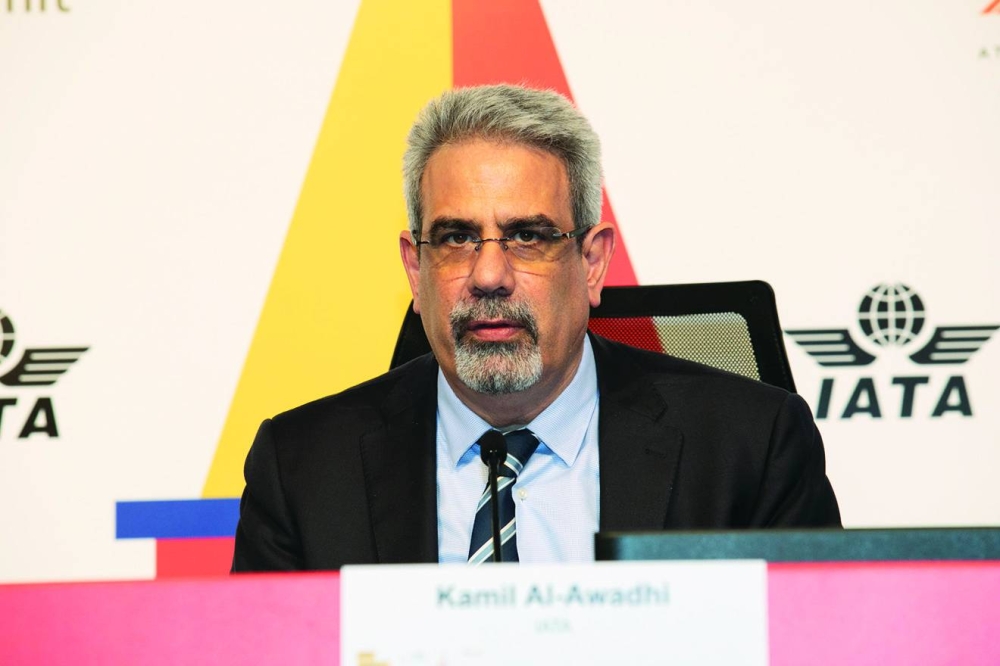Air passenger numbers in the Middle East will double to 550mn by 2040, International Air Transport Association (IATA) regional vice-president (Middle East) Kamil al-Awadhi said Sunday.
GCC carriers will continue to drive the Middle Eastern growth, al-Awadhi told Gulf Times in Istanbul.
However, IATA did not provide a breakup of the projected passenger numbers in the GCC region during the review period.
Al-Awadhi also said the Middle Eastern carriers, particularly, those based in energy-rich GCC, are looking increasingly at sustainable aviation fuel (SAF) because of their focus on environment.
But, he admitted, that there was not enough SAF in the market to meet the growing needs of airlines.
“Airlines cannot do much about it; they don’t produce SAF,” al-Awadhi noted.
Recently, Qatar Airways signed a deal with Shell to source 3,000 metric tonnes of neat SAF at Amsterdam Schiphol airport. It encompasses the existing jet fuel contract with Shell at Amsterdam which will now see Qatar Airways using at least a 5% SAF blend over the contract period for the fiscal year 2023-2024.
Qatar Airways' bilateral agreement with Shell is part of a wider effort initiated by the oneworld alliance, which has set the target of using SAF for 10% of combined fuel volumes by 2030.
Qatar Airways is the first carrier in the Middle East and Africa to procure a large SAF amount in Europe beyond government mandates. SAF offers significant potential for decarbonisation as the neat fuel can reduce full lifecycle emissions by up to 80% compared to conventional jet fuel.
This means that Qatar Airways will be reducing its emissions on flights from Amsterdam by approximately 7,500 tonnes of CO2 for the fiscal year.
Meanwhile, IATA’s latest data indicate Middle Eastern airlines posted a 38% traffic increase in April this year compared to a year ago. Capacity climbed 27.8% and load factor rose 5.6 percentage points to 76.2%.
On the cargo side, Middle Eastern carriers experienced a 6.8% year-on-year decrease in volumes in April this year. This was a slight decline in cargo sector performance compared to the previous month (-5.5%). Cargo capacity increased 10.0% compared to April 2022.
Middle East will be one of world’s fastest-growing aviation markets in the next decade, according to management consulting firm OliverWyman.
In a recent report, OliverWyman noted the Middle East remains among the fastest-growing aviation markets in the world, with the regional fleet set to expand 5.1% annually over the next decade. The maintenance, repair, and overhaul (MRO) sector will grow at a compound annual growth rate (CAGR) of 4.9% during the same period.
The Middle East aviation market is heavily dependent on international travel, which has been slower to rebound to pre-pandemic levels than domestic travel. However, last year the region benefitted from air traffic around events such as the World Cup, which was held in Qatar in the final two months of the year.
The Middle East’s share of the global fleet will grow over the decade from 4.9% in 2023 to 6% in 2033.
Meanwhile, the global fleet is projected to expand one-third by 2033, to well over 36,000 aircraft, with Oliver Wyman also anticipating a record number of aircraft deliveries over the next 10 years (despite current supply chain constraints).
The Middle East fleet’s growth over the next decade will primarily be driven by the addition of narrow bodies. Historically, the Middle Eastern fleet has been primarily made up of wide bodies.
But moving forward, narrow bodies will increase to 48% of the fleet from 39%, while wide bodies will decline to 48% from 56%, OliverWyman said.

Kamil al-Awadhi, IATA regional vice-president, Middle East. PICTURE: www.iata.org

